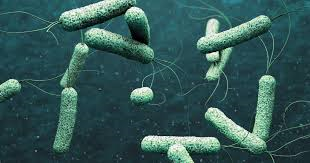This is an old revision of the document!
Table of Contents
Cholera
Signs and Symptoms
Cause
Cholera is caused by a bacterium known as Vibrio cholerae. There are different serogroups of Vibrio cholerae, but only two strains cause outbreaks - O1 and O139 (WHO, 2019). The deadly disease cholera is spread by drinking water or eating food contaminated with the Vibrio cholerae bacterium (CDC, 2018). The bacterium thrives in an environment of brackish water, i.e. water that is warm and salty. Vibrio cholerae produces a toxin in the small intestine, causing the deadly effects of cholera.
In a cholera epidemic, the source of contamination usually traces back to the feces of an infected person or through food washed in contaminated water (CDC, 2018). Cholera spreads rapidly in regions with inadequate sewage systems, poor water treatment, and poor sanitation/ hygiene. However, cholera is unlikely to be spread through direct contact from person-to-person. Although not every individual exposed to Vibrio cholerae will be affected, the bacterium can still pass with their feces to contaminate water and food supplies (WHO, 2019).
Mechanism
Vibrio cholerae enters via the fecal-oral route, from here the bacteria travels through the GI tract towards the small intestine. Before reaching their destination, the bacteria must survive the acidic conditions within the stomach and antimicrobial peptides in the small intestine (Almagro-Moreno et al., 2015). Those successful now focus on penetrating intestinal mucus using mucolytic enzymes followed by propulsion down a chemotactic gradient towards the intestinal mucosa.
Fimbriae on the bacterial surface is then used to attach to the intestinal mucosa. Next, an appendage on the surface of Vibrio cholerae cells called toxin coregulated pilus helps with colonization by binding the bacteria together to create a microcolony, thus increasing the local concentration (Krebs & Taylor, 2011). The local chemical environment at the intestinal wall causes Vibrio cholerae to activate the expression of ToxT regulatory proteins. ToxT proteins then activate the expression of genes that produce cholera toxin, the protein responsible for the symptoms of cholera (Almagro-Moreno et al., 2015).
Cholera toxin is made up of six protein subunits: a single A subunit and five B subunits, connected by a disulfide bond. The five B subunits form a five-membered ring that binds to GM1 gangliosides on the surface of intestinal epithelium cells (O’Neal et al., 2005). Next, the toxin enters via receptor-mediated endocytosis and once inside the disulfide bond is reduced. The now free A subunit binds to ADP-ribosylation factor 6, binding changes the shape of A subunit exposing its active site, allowing it to catalyse ADP-ribosylation of alpha subunits within G proteins (O’Neal et al., 2005). ADP-ribosylation causes alpha subunits to remain in its activated state. Increased alpha subunit activation leads to increased adenylate cyclase activity, which increases the concentration of cAMP to more than 100-fold over normal which leads to over-activation of protein kinase A. These active protein kinase A then phosphorylate the cystic fibrosis transmembrane conductance regulator (CFTR) chloride channel proteins, which stimulates intestinal mucosal cells to actively pump large amounts of Cl- into the intestinal lumen (O’Neal et al., 2005). H2O, Na+, K+, and HCO3− passively enter the intestinal lumen after due to the osmotic and electrical gradients created by the loss of Cl-. The combined effects result in rapid fluid loss leading to severe dehydration.
Diagnosis
Treatment
Epidemiology
Case Study
References
Almagro-Moreno, S., Pruss, K., & Taylor, R. K. (2015). Intestinal Colonization Dynamics of Vibrio cholerae. PLOS Pathogens, 11(5). doi: 10.1371/journal.ppat.1004787
Barton, M. (2018). John Snow and the 1854 Cholera Outbreak. Retrieved from https://www.pastmedicalhistory.co.uk/john-snow-and-the-1854-cholera-outbreak/
Beaumont, P. (2019, April 17). Mounting concern over cholera health crisis in Yemen. Retrieved from https://www.theguardian.com/global-development/2019/apr/17/mounting-concern- over-cholera-health-crisis-in-yemen
Centers for Disease Control and Prevention. (2018, July 20). Diagnosis and Detection. Retrieved from https://www.cdc.gov/cholera/diagnosis.html
Centers for Disease Control and Prevention. (2018, July 20). Treatment. Retrieved from https://www.cdc.gov/cholera/diagnosis.html
Cholera. (n.d.). Retrieved from https://www.who.int/news-room/fact-sheets/detail/cholera
Davis, C. P. (2018, August 13). Cholera History, Causes, Spread, Treatment & Symptoms. Retrieved from https://www.medicinenet.com/cholera/article.htm#what_is_the_history_of_cholera
Eastern Mediterranean Region. (n.d.). Retrieved from http://www.emro.who.int/pandemic-epidemic-diseases/cholera/outbreak-update-cholera-in-yemen-1-september-2019.html
General Information. (2018, May 11). Retrieved from https://www.cdc.gov/cholera/general/index.html
Harris, J. B., LaRocque, R. C., Qadri, F., Ryan, E. T., & Calderwood, S. B. (2012). Cholera. Lancet (London, England), 379(9835), 2466–2476. https://doi.org/10.1016/S0140-6736(12)60436-X
Krebs, S. J., & Taylor, R. K. (2011). Protection and Attachment of Vibrio cholerae Mediated by the Toxin-Coregulated Pilus in the Infant Mouse Model. Journal of Bacteriology, 193(19), 5260–5270. doi: 10.1128/jb.00378-11
Nebehay, S. (2018, October 2). Yemen Cholera Outbreak Accelerates to 10,000+ Cases Per Week: WHO. Discover Thomson Reuters.
O’Neal, C., Jobling, M., Holmes, R., & Hol, W. (2005). Structural basis for the activation of cholera toxin by human ARF6-GTP. Science. doi: 10.2210/pdb2a5d/pdb
Suspected cholera cases in Yemen surpass one million, reports UN health agency | UN News. (2017). Retrieved from https://news.un.org/en/story/2017/12/640331-suspected-cholera-cases-yemen-surpass-one-million-reports-un-health-agency
The global burden of cholera. (2012, February 29). Retrieved from https://www.who.int/bulletin/volumes/90/3/11-093427/en/
Tuthill, K. (2003). John Snow and the Broad Street Pump on the Trail of an Epidemic. Cricket. 31(3), 23-31. Retrieved from https://www.ph.ucla.edu/epi/snow/snowcricketarticle.html World Health Organization. (n.d.). Cholera. Retrieved from https://www.who.int/health-topics/cholera#tab=tab_1
Yemen cholera epidemic strain 'came from eastern Africa'. (2019, January 3). Retrieved from https://www.bbc.com/news/world-middle-east-46746394
Yemen: Conflict and a shattered health system. (2018, October 26). Retrieved from https://www.doctorswithoutborders.ca/country/yemen-conflict-and-shattered-health-system


